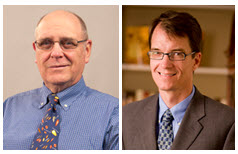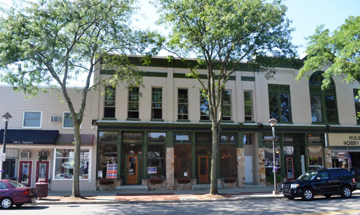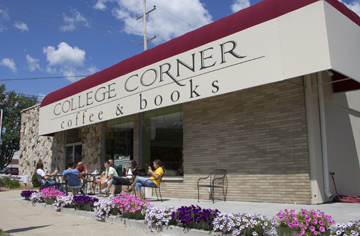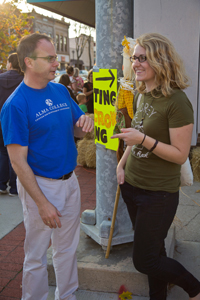By Mayor Mel Nyman and President Jeff Abernathy
Since its founding in 1886, Alma College has stood as a vital community partner, dramatically affecting the lives of those living in mid-Michigan and beyond. The college’s founding was made possible by Ammi Wright, a lumberman, businessman and civic leader who gave 30 acres of land and more than $300,000 to found and sustain the institution in its early years — a sum equivalent to more than $6.2 million today.
More than 125 years later, Alma College continues to value its role in the mid-Michigan community. The campus hosts the annual Alma Highland Arts Festival, which brings thousands of visitors to mid-Michigan to celebrate their Scottish heritage.
As part of its mission, the college also promotes a “culture of service” in which students meet local needs through participation with numerous community agencies and organizations.
One of the key questions in the college’s most recent planning effort was how it could leverage its presence to ensure that the college can thrive together with the community. The resulting plan, while establishing important educational goals, includes an emphasis on creating a sustainable campus and community. It states directly: “We will assist our city of Alma — where we aim to create a seamless environment between the downtown and the campus— as well as communities across Mid-Michigan in order to help our region thrive in the decades to come.”
There is much to be thankful in our small community of Alma. Business is growing in the downtown. Within view of town, the largest wind farm in Michigan has risen, with 167 monuments to the new economy. The efforts by community leaders in collaboration with Alma College professors and students to address environmental challenges caused by a chemical company that left the area decades ago continue to make meaningful progress.
All this good news is especially welcome in Alma, where we have had our share of challenges. The most recent economic downtown hit mid-Michigan hard, and in October 2010, a ruinous fire all but destroyed a prominent landmark at the center of our downtown, Alma’s former Opera House. In such a close-knit community, nearly every citizen felt the impact of these and other challenges.
And yet, the values and benefits of living in a college town still appeal to many. Recent developments are evidence that collaborative college-town partnerships are making a difference. Those developments include:
- In 2011, the college purchased a vacant building and moved its bookstore off campus and across the street into a location that formerly represented a geographic divide between town and gown. The college also partnered with Stucchi’s — a successful ice cream store that was destroyed in the downtown Opera House fire — and brought it in under the same roof. The new business is thriving, a welcome addition to the downtown where students and community members come together.
- Kurt Wassenaar, an investor with local roots committed to revitalizing the downtown Alma business district, bought the burned Opera House and determined to save it from demolition. Today, the building is undergoing major renovations that will restore its historic features while providing new retail opportunities on the ground floor and, in a leasing partnership with Alma College, student apartments on the second and third floors.
- Alma College has set an aggressive goal to place a large number of interns across mid-Michigan in an effort to help non-profits and governmental entities that lost so many resources in the recent downturn. Such work is hugely beneficial to Alma students even as it will help to sustain the communities across our region. Alma College students can learn how to leave positive footprints in Alma and wherever they go in the future.
- Alma College’s Center for Responsible Leadership and the Gratiot Area Chamber of Commerce sponsor an annual Fall Festival in October in downtown Alma. The purpose of the event is to strengthen the connection between the college and community and to encourage community members, merchants and students to meet and interact in a positive and education atmosphere. Activities include merchant specials and giveaways, raffle drawings, face and pumpkin painting, kids activities and more.
Reaching out to the community is a part of Alma College’s mission to “prepare graduates who think critically, serve generously, lead purposefully and live responsively.” We remain committed to the exciting work of building and nurturing community partnerships that will be key to the college’s future as well as that of our town and region.
Mel Nyman is the Mayor of Alma and Jeff Abernathy is the President of Alma College.









